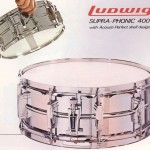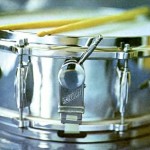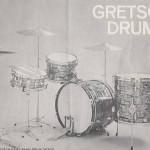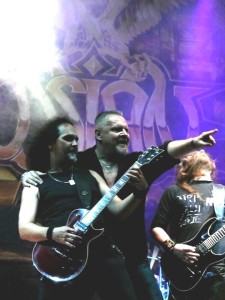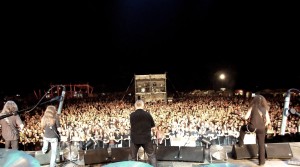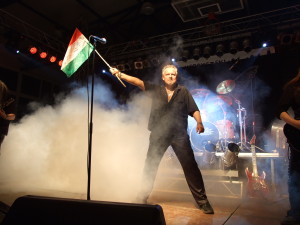First of all, thank you for your answer our questions.
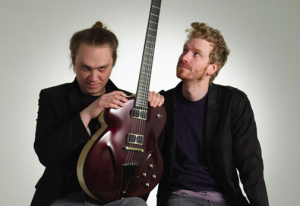
What motivated you to begin building guitars in the first place? And what type of guitars do you build? Standard models? Custom orders? How does it work?
S: For me it all start up when i bought my first guitar in 81 , I did everything that was humanly possible to it in term of modifications, the fact that i didn’t have any money to go on with my guitar obsession, i had to constantly change the only one i had.
J: On my side I couldn’t help but dismantling everything that surrounded me, from the toaster to my basses, passing through my parents new cell phones. One of the first try out on instruments was a crappy guitar that I found in the garbage and tried to convert into a tap guitar. The money factor was a real challenge for me too.
We start building repro some years ago, teles, strats, LP as a normal phase we had to go through before coming with our own signature design.
Now that we have lay down our line, with the “T-Bucket», “Disco Volante” etc … and that we craft every guitar by hand , we could taylor-made one of our models to a particular customer’s taste, in the matter of neck shape, pickups, wood choice & hardware.
But keep in mind that the sonic DNA of our guitars in term of choice of the elements is the result of researches we’ve been through in order to give what we thought was the best in terms of tone, playability & comfort.
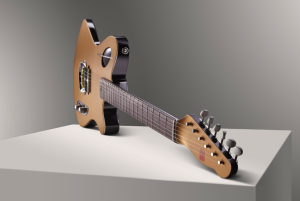
Please describe to us how do you come up with the names for your guitars?
Mmmh , sometimes it will come prior to the building of the instrument somehow giving us a guiding line we will follow stylistically, sometimes we will come up with the name after we finished, that was the case for the “Disco Volante “.
For the moment all the names has come out of our passion for the automotive design.
Can you describe to us the process, from idea to conception, of building a great guitar?
I think it‘s a real standard one, starting from an idea ,making some sketches that will serve us to draw a plan , keeping it simple because we know that some elements could change . Even if it doesn’t show up in the final result, we like to improvise & take a new direction right in the middle of the building process. We are both in a continuous brainstorming situation while building a new instrument, after the birth of the first prototype of a particular model we will still change some elements, that’s why I think each of our instruments is unique.
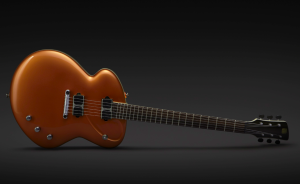
Do you have one instrument that is your favourite or that makes you the most proud in terms of craftsmanship, sound, look, and so forth?
I think without a doubt that the “Phaeton” is the most time consuming, craft wise demanding we’ve made so far, from the first sketches to the final polishing it took us a year & a half to complete but we enjoyed every minutes working on it and the reaction of people who saw it in flesh was really rewarding.
How do you consider musical styles and genres when building your guitars in terms of selection of woods, finishes, pickups etc.?
Wow! We listen to too many musical genres to focus our choices on one in particular, what’s interesting in the combination of a guitar types & musical genres is that everything is possible because a guitar player would choose his instrument for the tone, the look or the technical features to match his tastes .
For example a SG guitar could be devilish looking, wicked riffing for Angus Young, warm & clear sounding for Derek Trucks and feature a fast flat neck for high speed legato runs for Allan Holdsworth.
So we try to envision our guitar as the tool the artist personality will express through, so we concentrate on tone, playability & comfort.

Are your guitars especially common among musicians playing a certain genre?
I think so, but that wasn’t intended it is more due to tendency of the guitar community to rely only on iconic 50’s & 60’s guitar designs, we just stumble on this Charles Kettering quote lately that’s so true especially for the guitar world :”People are very open-minded about new thing as long as they’re exactly like the old ones”.
Look how classic brands keep reinventing the wheel, in a lame commercial & uninteresting way, what the unstoppable inventor Leo Fender was, would think of this?
So thanks to some more challenging guitar players & art lovers for bringing up front some more modernistic & challenging guitar designs, artists like David Torn, Adrian Belew, Henry Kaiser , Lou Reed…
So it’s the experimental cats that seemed the more interested in our work, but on the other hand we still feel our guitars could be classic blues, rock or jazz tone machines.
When building a custom guitar or a bass for a particular player, what considerations do you make?
You have to consider every single part of the customer’s taste style & tone, but most of the time the customer come to see you because he had already like your designs, then it’s just a matter tweaking some details.
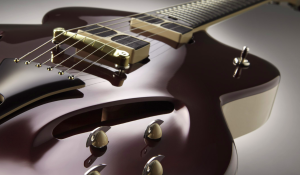
What accomplished musician, apart from the many you`ve already have collaborated with, would make you proud to see play your guitars or basses, and why?
S: I would say Jeff Beck, because he invented the “Tele-Gib” concept and that our “T-Bucket” is basically a completely refined version of this concept & at last but not least I think he’s the greatest Guitar player of his generation.
Another should be Keith Richards, he’s the coolest of cool, he doesn’t want to do any contract with any guitar company, he only plays what he wants, a true free soul & that really talks to me. He moves on stage like a black mamba snake, I would love to see him riffing “Brown sugar” on one of our guitars in one of his classic posture.
J: First, let’s say Prince all dressed up with a Tao could be a good shot, as in the past he dared to use new designs and make he’s personality out of it, I suppose he could find his way back to special designs with ones of ours.
And definitely Brian Setzer, I would love to put a TV Jones set and a Bigsby on our Phaeton and see Mr Setzer rocking this beast.
Any interesting new guitars or basses on your workbench right now?
We are working on three different project at this time, the first one is to come up with a “T-Bucket” in a more standard form, different PU’s and a little less options that would bring the price down in order to make it more affordable to the discriminating musician, but still crafted by hand in our workshop so more people could enjoy a little of the “Tao” magic.
The second project is a totally new guitar that was in our sketchbook for long time now & that a friend and customer has ordered us in order to see it come alive, this one should be finished by the end of the year.
The third one will be to design a bass version of our “T-Bucket”, that was our will from the beginning but we didn’t had the time to do it so far.
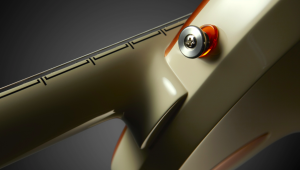
Any advice for players looking to order a custom guitar or bass?
Just call us, so we could talk around a particular project & make the right quotation to it and mainly because we prefer to have a warmer human contact.
Given that this is for a blog, what role has technology (the internet, your website, etc.) played in the success of your business?
A big one, making contact or touch people couldn’t be consider without it today, on an other hand we still move & travel in order to meet the people who want to meet us, or even some who doesn’t, hahaha!
Any famous last words?
« Fine art is that in which the hand, the head and the heart of a man go together “
John Ruskin
Find more about Tao Guitars on their website or on Vintage&Rare.com
Tao Guitars on Facebook


